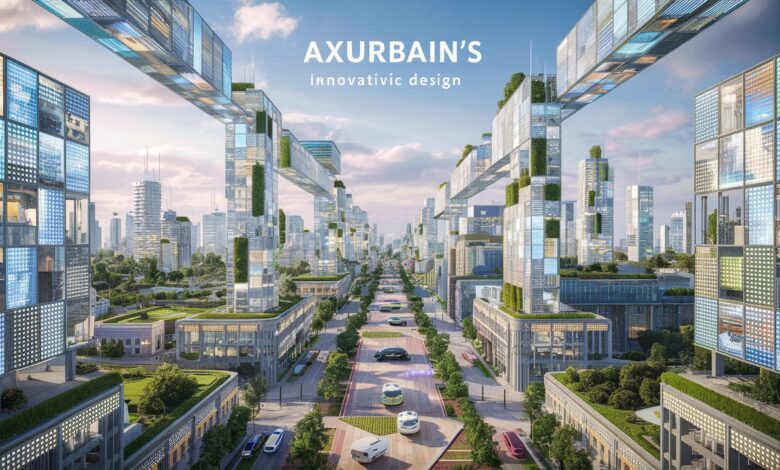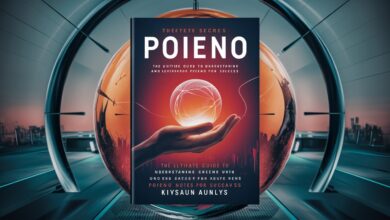“Axurbain: Revolutionizing Urban Living Through Smart Design”

In a world where urbanization is accelerating at an unprecedented pace, the demand for innovative, intelligent, and sustainable city planning is more critical than ever. Enter Axurbain, a cutting-edge concept reshaping the way we think about city living. At the intersection of technology, sustainability, and human-centered design, Axurbain is not just a buzzword; it represents a transformative approach to how we build, live, and interact within urban environments. As cities grapple with challenges like overcrowding, pollution, and infrastructure fatigue, Axurbain offers a fresh perspective grounded in smart solutions and long-term vision.
What Is Axurbain?
Axurbain can be described as a holistic and forward-thinking framework that combines urban planning, smart technology, and sustainability principles to create environments that are both livable and future-ready. Whether it’s integrating AI-driven traffic management systems, green building practices, or community-oriented public spaces, Axurbain prioritizes both functionality and quality of life. It’s a response to the rigid, outdated systems that many cities still rely on, paving the way for a seamless blend of innovation and practicality.
Rather than focusing solely on architectural aesthetics or technology for technology’s sake, Axurbain brings meaningful intelligence into urban layouts. It takes into account the real needs of residents—mobility, connectivity, safety, environmental impact—and offers scalable solutions that work for megacities as well as mid-sized urban hubs.
The Core Pillars of Axurbain
1. Smart Technology Integration
Technology is at the heart of Axurbain. From IoT-powered lighting systems to autonomous waste management and real-time energy monitoring, smart tech is deeply woven into the fabric of every Axurbain initiative. These technologies aren’t flashy add-ons—they are core components that ensure efficiency, safety, and sustainability.
2. Sustainable Urban Development
Axurbain emphasizes green buildings, renewable energy, vertical farming, and water recycling systems. It strives to minimize carbon footprints while maximizing energy efficiency, thereby aligning with global goals like the UN’s Sustainable Development Goals (SDGs). Cities adopting Axurbain models can significantly reduce their reliance on non-renewable resources.
3. Human-Centric Design
A standout feature of Axurbain is its user-focused philosophy. Urban environments are tailored to enhance accessibility, mental health, and well-being. Wide pedestrian walkways, vibrant community spaces, air-purifying vegetation, and noise-reducing architecture come together to foster a deeper sense of community.
4. Data-Driven Governance
In Axurbain, data isn’t just collected—it’s used to drive intelligent policy decisions. City administrators can use real-time analytics for crime prediction, traffic flow adjustments, pollution control, and emergency response systems, making governance more proactive than reactive.
Why Axurbain Matters in the 21st Century
Modern cities face a complex web of challenges: population booms, climate change, deteriorating infrastructure, and socio-economic inequalities. Traditional urban models are often ill-equipped to adapt to these dynamic conditions. Axurbain offers a future-proof solution, one that not only solves present-day problems but anticipates future needs.
Furthermore, Axurbain is not restricted to brand-new developments; it also provides frameworks for retrofitting existing cities. Urban renewal projects, when aligned with Axurbain principles, can breathe new life into deteriorating districts, turning them into vibrant, smart, and sustainable communities.
The Global Impact of Axurbain
As the global race toward smart cities intensifies, nations that adopt Axurbain strategies position themselves at the forefront of urban excellence. From Singapore’s smart transport grids to Copenhagen’s climate-friendly infrastructure, early adopters are already reaping the benefits of similar models. Axurbain can serve as the blueprint that unifies these fragmented innovations into a cohesive, replicable model across different regions and economies.
In developing countries, Axurbain also opens up possibilities for leapfrogging outdated infrastructure, allowing cities to build smarter from the ground up. It fosters digital inclusion, improved health outcomes, job creation, and ultimately, a higher standard of living.
Conclusion: A Vision Worth Building
Axurbain is more than a concept—it’s a movement toward smarter, kinder, and more adaptive cities. It encapsulates the potential of what urban life could look like when design meets data, and innovation meets empathy. As urban planners, policymakers, and citizens rally around the need for smarter living spaces, Axurbain offers a roadmap toward a future where cities are not just places to live, but ecosystems that inspire, support, and thrive. The time to embrace this urban evolution is now—and Axurbain is leading the way.
FAQ About Axurbain
Q1. Is Axurbain a real company or just a concept?
Axurbain can refer to both a branded framework and a broader conceptual approach to smart urban development. If you are seeing it in a business or government context, it may be a specific project or initiative.
Q2. How does Axurbain compare to other smart city models?
Unlike many top-down tech-heavy models, Axurbain is uniquely human-centric. It blends cutting-edge technology with a deep understanding of social and environmental needs.
Q3. Can Axurbain be applied to existing cities?
Absolutely. One of Axurbain’s strengths is its adaptability. Cities can integrate Axurbain principles through upgrades in infrastructure, zoning, transportation, and public services.
Q4. Who can benefit from Axurbain?
Everyone—from local governments and city planners to real estate developers and everyday citizens. It’s designed to serve both policy and people.
Q5. What technologies are key to Axurbain’s implementation?
IoT devices, 5G networks, AI, green energy solutions, smart grids, autonomous systems, and big data platforms all play vital roles in the Axurbain ecosystem.



